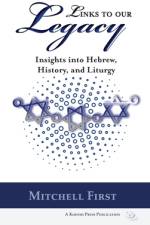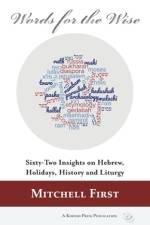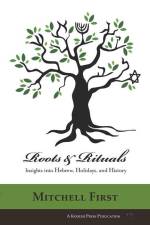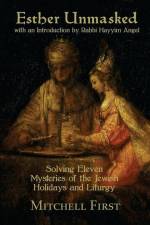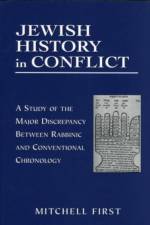av Mitchell First
301
Unlocking the Secrets of Jewish TraditionIn Esther Unmasked, Mitchell First dives into some of the most perplexing and intriguing questions surrounding Jewish holidays and liturgy. Combining meticulous historical research, classical Jewish sources, and innovative thinking, this book explores the origins, meanings, and evolutions of cherished traditions, providing fresh perspectives for both lay readers and scholars.Key Highlights and Chapter Summaries: Establishing the Correct Text in Aleinu: Is the famous phrase tikkun olam in Aleinu correctly translated, or does it originally mean something else entirely?The Origin of the Word Mechilah: Where does the term for forgiveness originate, and how does it differ from biblical concepts like selichah?The Cryptic Phrase Ani Va-Ho: What does this obscure Mishnaic expression mean, and how should it be understood in the context of Sukkot rituals?The Meaning of "Maccabee" What does the name Maccabee signify, and how does it reflect the essence of the Hasmonean revolt?The Meaning of Chashmonai: What is the origin of the term Chashmonai and its connection to Jewish resistance?Antiochus' Decrees Against the Jews: What motivated the infamous decrees of Antiochus IV, and what were their historical and cultural roots?The Origin of Taanit Esther: How did this fast day arise when it is not mentioned in the Book of Esther or the Talmud?Achashverosh and Esther in Secular Sources: How do historical records about Xerxes and his queen Amestris align with or challenge the portrayal of Achashverosh and Esther in the Megillah, and what can this tell us about the historical context of the Purim story?The Evolution of Mah Nishtannah: Why did the Passover Seder's iconic Four Questions originally contain only three, and how did the fourth question evolve?Arami Oved Avi in the Mishnah: How does a closer analysis of the Mishnah alter our understanding of this famous biblical phrase?The Pe-Ayin Order in Ancient Israel: What can the ordering of letters in ancient Hebrew teach us about the Book of Psalms and Lamentations?Sources Cited in Esther UnmaskedBiblical Texts: References to the Torah, Psalms, and Lamentations provide a foundational understanding of Jewish traditions.Mishnaic and Talmudic Literature: Core insights into Jewish rituals and practices are drawn from the Mishnah and Talmud.The Dead Sea Scrolls: These ancient texts shed light on the evolution of Jewish practices in the Second Temple era.Classical Commentaries: Scholars like Rashi, Ramban, Ibn Ezra, and Radak offer traditional interpretations to anchor his analyses.Archaeology and History: First incorporates archaeological discoveries and Greek-Persian historical accounts, such as those of Herodotus, to contextualize figures like Achashverosh and Esther.Modern Scholarship: Studies from journals like Hakirah and AJS Review provide contemporary perspectives.Linguistic Analysis: The etymology of terms and names is explored through ancient Hebrew and related languages.About the Author: Mitchell First is a historian, scholar, and legal professional with a deep passion for Jewish history and liturgy. A graduate of Columbia College and Harvard Law School, First is also a published author in respected academic journals such as Hakirah and AJS Review. He combines his expertise in history and law to offer a unique perspective on Jewish texts and traditions. First lives in Teaneck, NJ, with his family, where he continues to write and lecture on topics of Jewish interest.

